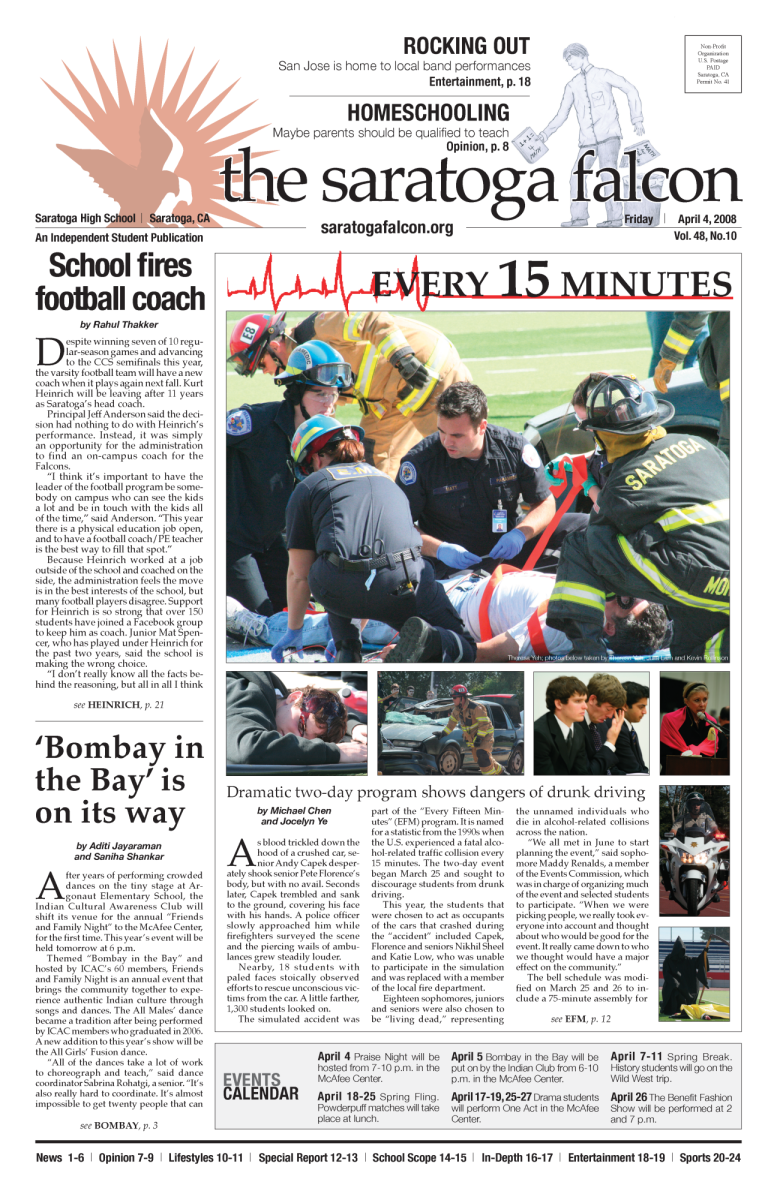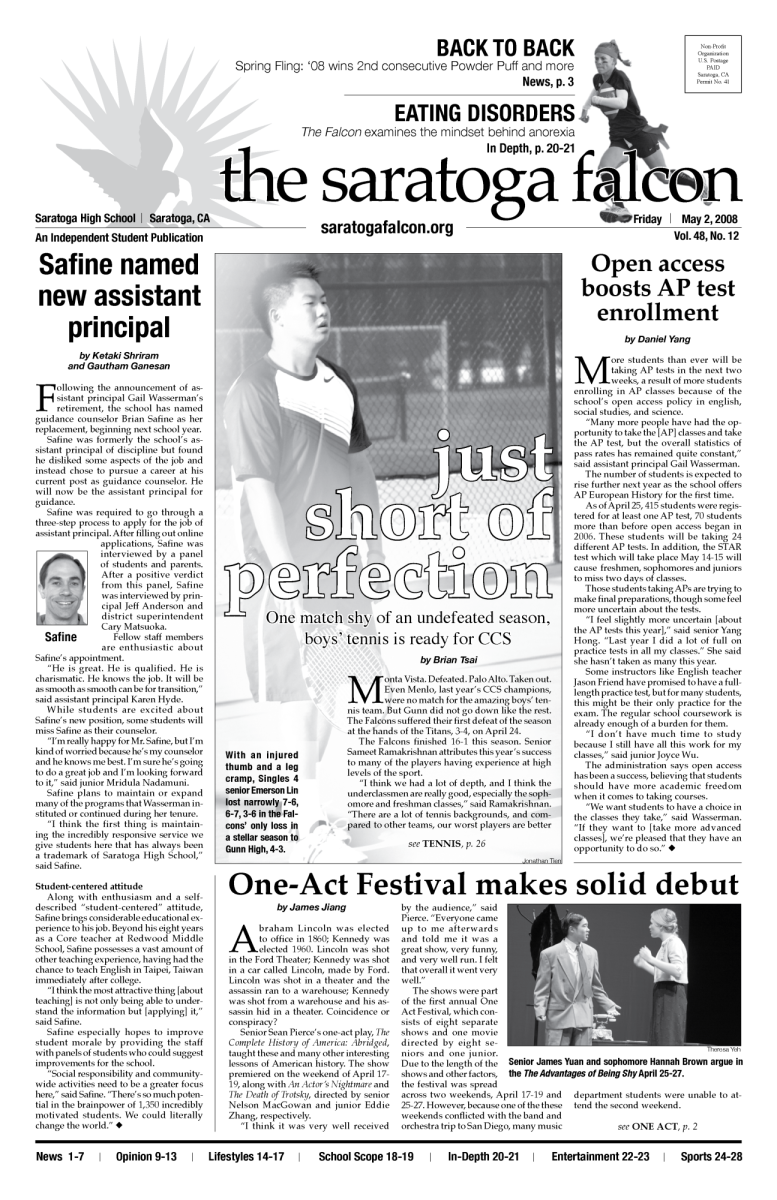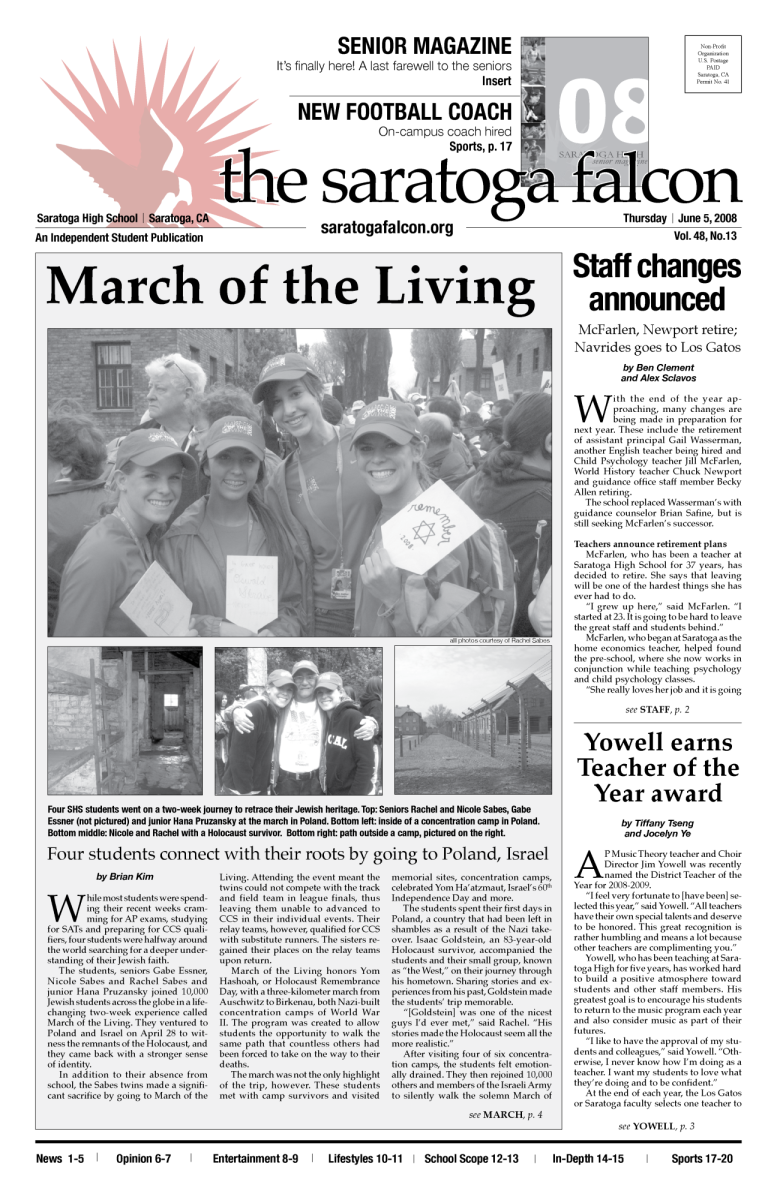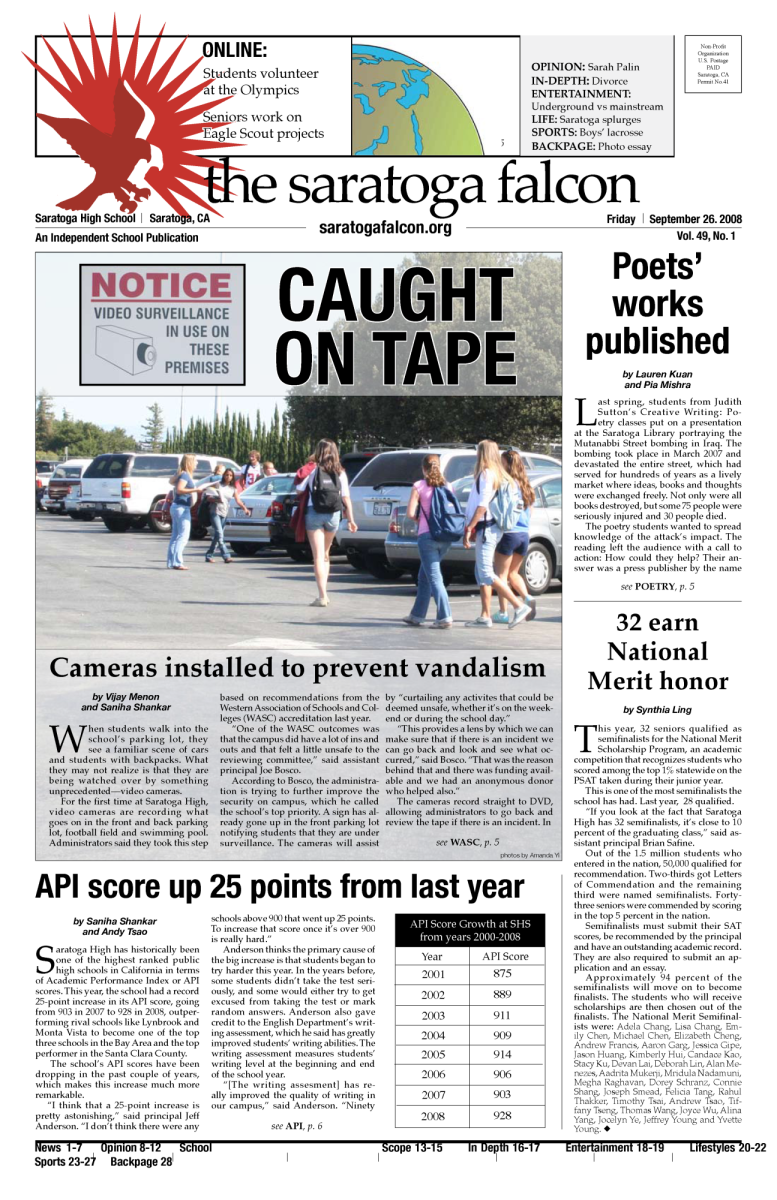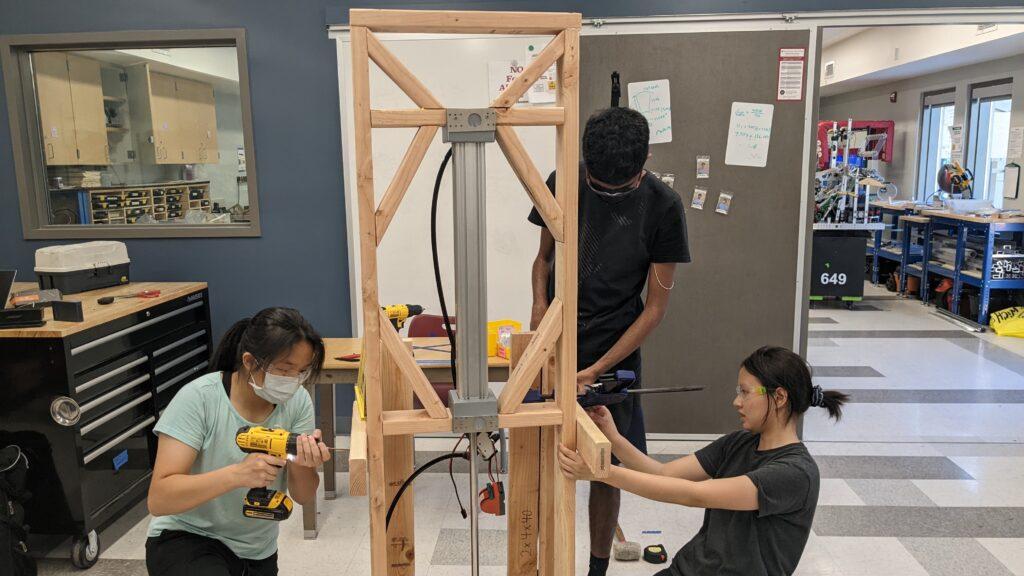As the goop and seeds of a newly mashed pumpkin were launched toward all four walls of the transparent enclosure, members of the school’s flagship robotics team, MSET 6165 Cuttlefish, cheered in relief. Earlier this month, the Cuttlefisht tested their pumpkin-smashing robot for the first time. Its goal is to decimate carved pumpkins in an attempt to reduce and bring awareness to food waste and composting, especially after Halloween.
Cuttlefish will showcase their pumpkin smasher at an event, STEM Madness at Saratoga High (SMASH), on Nov. 2 at 4 p.m. SMASH is intended for anyone interested in composting pumpkins or simply looking to continue the fun of Halloween. In addition to the pumpkin smasher, there will be a robotics fair in which the audience can interact with other robotics teams in the community.
Partnering with West Valley Composting, the team hopes to compost 300 pumpkins and deliver all of the food waste gathered from the event to a composting plant in Campbell to reduce the waste caused by Halloween pumpkins and jack-o-lanterns in the community.
The inspiration of the Halloween-themed event came from senior hardware lead Emily Lu and her experience with composting. Ever since her mom started composting for their garden in her freshman year, Lu said she has been fascinated with composting. After realizing food waste could be repurposed, she wanted to do more about it. Lu started off simple with vermicompost through a worm bin and composting food scraps.
Lu had previously learned of the numerous amounts of waste that pumpkins generate from Halloween, and after hearing about a team ramming pumpkins with their robots during a trip to Washington, D.C., she put the two concepts together to create a solution: a pumpkin smasher.
“Since it’s very seasonal and there are a lot of jack-o-lanterns and other decorations that are usually thrown away right after, it’s really unsustainable and bad for the environment,” Lu said. “I wanted to focus on composting the actual pumpkin and bringing awareness to food waste. Composting pumpkins breaks them down and produces a significantly less amount of pollutants.”
The team originally had two potential approaches when designing the pumpkin smasher: The initial plan was a simple guillotine design consisting of a heavy block dropped from a reasonable height to smash the pumpkin. The team also considered using a pneumatic piston with a plate to push down onto the pumpkin using high air pressure to actuate and retract the piston.
Ultimately, Lu chose the latter option because it was more challenging and consistent.
“We decided to use pneumatics since it would be much more technically engaging for us, since we haven’t worked with pneumatics before.” Lu said. “And instead of having to rely on gravity, we could control the amount of force that we want to exert.”
Lu described how the team spent a week on research and design meetings with mentors to ask questions and gain feedback on their ideas after commiting to the idea.
The team began building in late August after researching and designing different parts for the pumpkin smasher with CAD (Computer Aided Design), and completed their first prototype by Sept. 6.
One of the main problems that the team ran into while testing their first prototype was the lack of force when the plate came into contact with the pumpkin.
“It wasn’t as exciting as I had anticipated,” Lu said. “The plate was pretty large, so the pressure from the piston is distributed throughout the pumpkin and does not provide enough force to smash the pumpkin at one singular point of contact.”
Lu had two possible solutions, adding screws around the plate in order to guide the force in more concentrated areas or mimicking apple splitters and attaching them to the plate to guide the pumpkin into breaking points.
Ultimately, she decided to go with the apple splitters since it was much longer than the screws and could cut into the pumpkin more efficiently, which did the trick.
Junior Jarrett Singh, who works on the hardware team, said that the solution worked out, and that he was especially proud at how they came together to create the pumpkin smasher in a timely manner.
“I think it was a major success,” Singh said. “Though we were all new to this type of engineering, we all worked together really well and got the first iteration only a few weeks after the initial idea. Even then, we iterated really efficiently and solved the problems together. That was really impressive to me.”
Additionally, Singh said his contributions on the design and build team for the pumpkin smasher have been a highlight of his time in robotics.
“You don’t smash pumpkins on a daily basis, especially with a pneumatic piston that we’ve built as a team,” Singh said. “Working with stuff that I don’t usually get to, like pneumatics and wooden structural frames, was a really cool learning opportunity.”
Ultimately, Lu said that she and her team are satisfied with the final iteration of the pumpkin smasher and hope that the event will be as successful.
“It was really rewarding seeing the pumpkin smasher come together from an idea to actually smashing a pumpkin for the first time,” Lu said. “I’m really proud of our team for working together and our mentors for helping us with some of our challenges along the way. I hope that this event will bring fun and awareness to the community.”
























